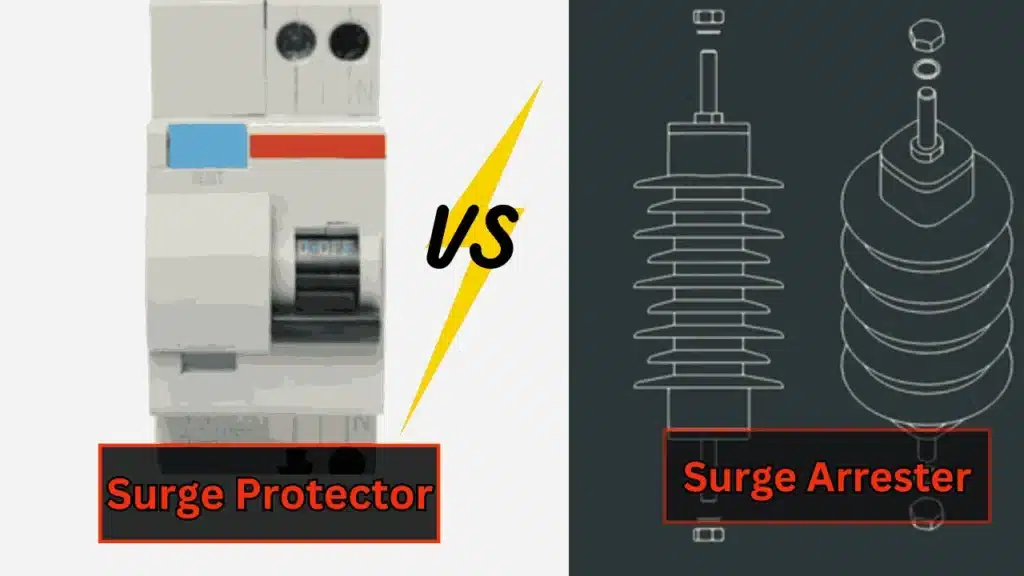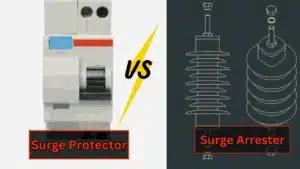Choosing the best defense against power surges is essential to protect electrical equipment from unexpected malfunctions. Surge arresters and protection devices play a vital role, but their working principles vary. While both shield against lightning strikes, they serve different applications. To make the right choice, you need to understand how each device works and which one fits your needs.
How to Know What You Need
If you want to learn which device is right, start by identifying your protection requirements. Surge arresters work well for high-energy surges from external sources like lightning, while surge protection devices handle internal malfunctions. Your equipment type and electrical setup determine the best solution.
Surge Arrester vs Surge Protector: How They Work?
When dealing with electrical safety, choosing the right equipment is essential. While both devices help protect against power surges, their working principles differ. Surge arresters are mainly used in high-voltage applications to block harmful spikes before they reach sensitive systems. They rely on insulating material to direct excess energy safely to the ground.
On the other hand, surge protectors are designed for household situations, acting as a barrier for plugged-in devices. They are developed to absorb sudden surges, preventing damage to electronics. Understanding these differences helps in selecting the right solution for your electrical setup.
What is Surge Protection Devices
A surge protection device is a crucial safeguard for sensitive electronics, ensuring they remain unharmed during unexpected power surges. Unlike primary electric systems, which manage overall grid stability, these devices operate on a secondary system to defend against sudden lightning strikes and fluctuations.
As power passes through a surge protector, it utilizes different methods to protect electronics, effectively preventing damage. The most common approach involves a metal oxide varistor (MOV) inside the protector, which absorbs excess power and acts as a shunt resistor to redirect extra voltage safely to the ground, sparing valuable electric equipment from harm.
Another technique relies on a gas discharge arrester (GDR), which stays inactive at safe voltage levels but activates when needed. When a power surge occurs, electricity ionizes the gas, transforming it into a conductor that efficiently redirects current to the ground line. Once the voltage returns to an acceptable level, the gas is no longer ionized, and the system stabilizes. These protective mechanisms ensure that current flows safely, preventing lasting damage to connected devices.
What is Surge Arresters
In primary electrical systems, keeping equipment safe from sudden power surges is crucial. That’s where surge arresters come in. As the name suggests, these devices act as a barrier, stopping dangerous high-voltage current before it reaches the system. They serve as an insulator until the voltage increases above safe levels, at which point they activate. Inside, they contain metal oxide varistors, which are arranged in a series of blocks.
When an overvoltage occurs, the arrester sets off these varistors, turning them into conductors to divert excess voltage away from the system. Their nonlinear pattern ensures they quickly lose conductivity once the voltage returns to normal, preventing unnecessary disruptions. This smart design makes surge arresters essential in safeguarding electrical networks from lightning strikes and unpredictable voltage spikes.

Surge Arrester vs Surge Protector: Technical Differences
Surge arresters and surge protectors may seem similar, but they function differently. It is important to understand their differences in design, life expectancy, monitoring capabilities, internal fusing, and power interruption to choose the right one for your needs. We take a closer look at these differences in detail below.
Monitoring Capabilities: How They Detect Issues
One key difference between a surge protector and a surge arrester is their monitoring capabilities. A surge protector has the ability to detect internal malfunctions and react by turning on a light or setting an alarm when something is wrong. This means that users can be alerted if the device is not working properly. However, surge arresters do not have this capability, which means they do not provide alerts for faults.
EMI/RFI Filtering: Reducing Unwanted Signals
If you are concerned about electromagnetic and radio frequency interference, then a surge protector is the better choice. Some protectors offer EMI/RFI filtering, which reduces unwanted noise in electrical systems. This helps ensure a stable electrical environment. However, this capability is not present in surge arresters, so they do not provide protection against interference.
Internal Fusing: Preventing Overloads
Internal fusing is an important feature that protects electronic equipment from an overload current. This is an essential function in surge protectors, as it helps prevent damage to connected devices. In contrast, surge arresters do not include internal fusing, making them less effective in protecting against power surges caused by sudden increases in current.
Design: How They Are Built
The design of surge protectors and surge arresters is quite different. Both rely on MOV systems, but the arrangement is not the same. A surge protector typically uses a hybrid MOV design, which makes it compact and efficient. On the other hand, a surge arrester has a gapped MOV design, making it bulkier. As a result, arresters are generally much larger than protectors, which affects installation space and practicality.
Interrupts Power: Managing Voltage Surges
A surge protector does not completely interrupt the flow of power but instead diverts the voltage until it returns to a normal level. On the other hand, surge arresters handle extreme voltage surges differently. They are equipped with a crowbar circuit, which acts as a failsafe. If a malfunction occurs, the crowbar will fully interrupt the current, preventing further damage to connected devices.
Warranty: Long-Term Protection
If you are considering the warranty, surge protectors generally provide better coverage. Many models come with a guaranteed five-year warranty, offering extended protection. In contrast, surge arresters usually come with only a limited warranty, making them less reliable in the long run.
Life Expectancy: Which One Lasts Longer?
When it comes to life expectancy, surge protectors last much longer than surge arresters. With proper maintenance and sizing, a surge protector can remain functional for up to twenty-five years. In contrast, surge arresters typically last between three to five years. If you experience frequent surges, their lifespan may decrease to as little as two years.
When to Use Surge Protection Devices or Surge Arresters?
In my experience working with electrical systems, knowing when to use a surge arrester or a surge protector is crucial for ensuring safety and efficiency.
A surge arrester is ideal for high-voltage environments like substations, where it shields primary equipment, including panel boards, circuits, wiring, and transformers, from dangerous spikes. These are common in industrial and manufacturing situations where large machinery operates.
On the other hand, a surge protector is more suited for lower-voltage applications, mainly in commercial, residential, and businesses, where sensitive electronics and solid-state components require protection. Homes today are filled with advanced devices that rely on secondary systems, making a surge protector essential for preventing damage to valuable appliances. Whether safeguarding heavy-duty machinery or everyday gadgets, choosing the right system ensures reliability and longevity.
Making the Right Choice for Your Power Safety
When dealing with power surges, using the right devices is crucial for protecting your electrical equipment. Surge arresters act as primary devices, shielding large systems, while surge protectors serve as a secondary system, defending smaller appliances.
At Spark Edge Electric, we understand the variety of needs people have when choosing between these options. If you’re unsure about the best applications for your situation, it’s always wise to consult a professional. Don’t hesitate to contact an expert who can help you select the right solution including the best surge protection for your needs.

